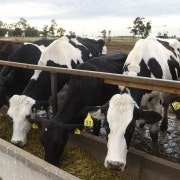Wesfarmers finds the Coles gold
The grating visibility of Coles' admittedly very successful 'Down, Down' campaign might have created a perception that it is pursuing a simple price-driven strategy to drive sales. Today's Wesfarmers group results, however, show that it would be far too simplistic to see discounting as the driver of the accelerating momentum in that business.
The 21.2 per cent increase in Coles' earnings in the year to June was more than three times the 6.9 per cent rate of growth in sales, which was reflected in an earnings before interest and tax margin that rose from 3.7 per cent to 4.2 per cent, and a return on capital that jumped from 6.5 per cent to 7.8 per cent.
While undoubtedly the big increase in volume – more than $2 billion of extra sales – played a major role, it is obvious that both the continuing reductions in costs (an improvement of more than $100 million in wastage, for instance) and big increases in sales in targeted segments, like the $600 million of extra fresh food sales, are feeding into the overall acceleration in sales, earnings, margins and returns.
Coles was, of course, the centrepiece of the massive, $19 billion, gamble Richard Goyder took in 2008 when, on the cusp of the financial crisis, he decided to acquire Coles and its sibling brands. The gamble was on Wesfarmers' ability to renovate some fairly dilapidated brands in the face of fierce competition from a dominant competitor.
Roughly halfway through the five years he gave the project, Coles is performing better at this point than anyone could have anticipated. Kmart is showing some promising signs, Officeworks is a far better and bigger business and only Target, which has borne the brunt of the bloodbath discount department stores have been experiencing, is misfiring.
There will be the usual criticism that, even with the massive rebound in Coles' performance, its meagre return on capital – and, indeed, that of its siblings, with the peculiar exception of Kmart – has dragged the Wesfarmers group's returns down to un-Wesfarmers-like levels. The group's return on equity improved, but only from 6.4 per cent to 7.7 per cent, a far cry from the returns Wesfarmers reported in its pre-Coles era.
Wesfarmers bought those retail businesses during the final phase of the pre-crisis bubble, paying for them largely with its own bubble-inflated scrip. It may appear to have paid too much, but it did so with highly inflated currency.
The issue is more an accounting one than real. It had to account for the acquisition at its nominal cost and couldn't write the values down to levels more consistent with the post-crisis value of its shares unless it could demonstrate permanent impairment – which the performance of the brands wouldn't allow.
It would appear that Wesfarmers itself compounded the perception problem in the way it allocated the acquisition costs between the brands. The peculiar return on capital of Kmart – 23.8 per cent – and the relatively low 7.8 per cent return from Coles would imply that, with hindsight, Coles was asked to carry too much of the acquisition cost and Kmart too little.
In the real world, Goyder knows that Wesfarmers, and the team headed by Ian McLeod that it imported to drive the Coles revival, have added real value and, halfway through their transformation program, have put the food and liquor group in a position where even on an artificially-inflated equity base it is capable of eventually generating double-digit returns.
Kmart's relatively small share of the acquisition cost reflected its status as a perennial performer with a questionable future when it was acquired.
While its earnings improvement was relatively modest this year, with a 4.1 per cent rise in EBIT to $204 million, given the ferocious competition for weak consumer spending occurring at the discount end of the market that is actually a real achievement and a validation of the radical new and disruptive model Guy Russo has introduced to that business, with its very tight range and very low pricing.
Target's earnings were down 26.5 per cent despite an increase in sales and transaction volumes, which is a reflection of how tough its end of the market has been. Nevertheless, a retail margin of 7.4 per cent is respectable in the circumstances.
The one big retail business Wesfarmers owned pre-Coles was Bunnings, which as usual produced a stellar result, with earnings up 20.2 per cent and a 28 per cent return on capital despite an acceleration of its network expansion and some costly repositioning of its in-store offering in preparation for Woolworths' entry to the sector.
The strength of the performance of its key retail businesses, a massive rebound in the earnings of its coal business, which more than doubled, and strong growth in its chemicals and industrial divisions helped Wesfarmers more than offset a $100 million or so decline in its insurance earnings as a result of the series of natural disasters to produce a 22.8 per cent increase in group earnings.
The strong performance of those retail businesses also justified and enabled a 25 per cent increase in capital spending, to $2 billion.
That's another vindication of the original strategy of looking for a stressed and capital-starved Australian opportunity of size, that Wesfarmers could pump its investment capital into, to create a relatively low-risk value-adding opportunity without having to venture into unfamiliar territory offshore.















